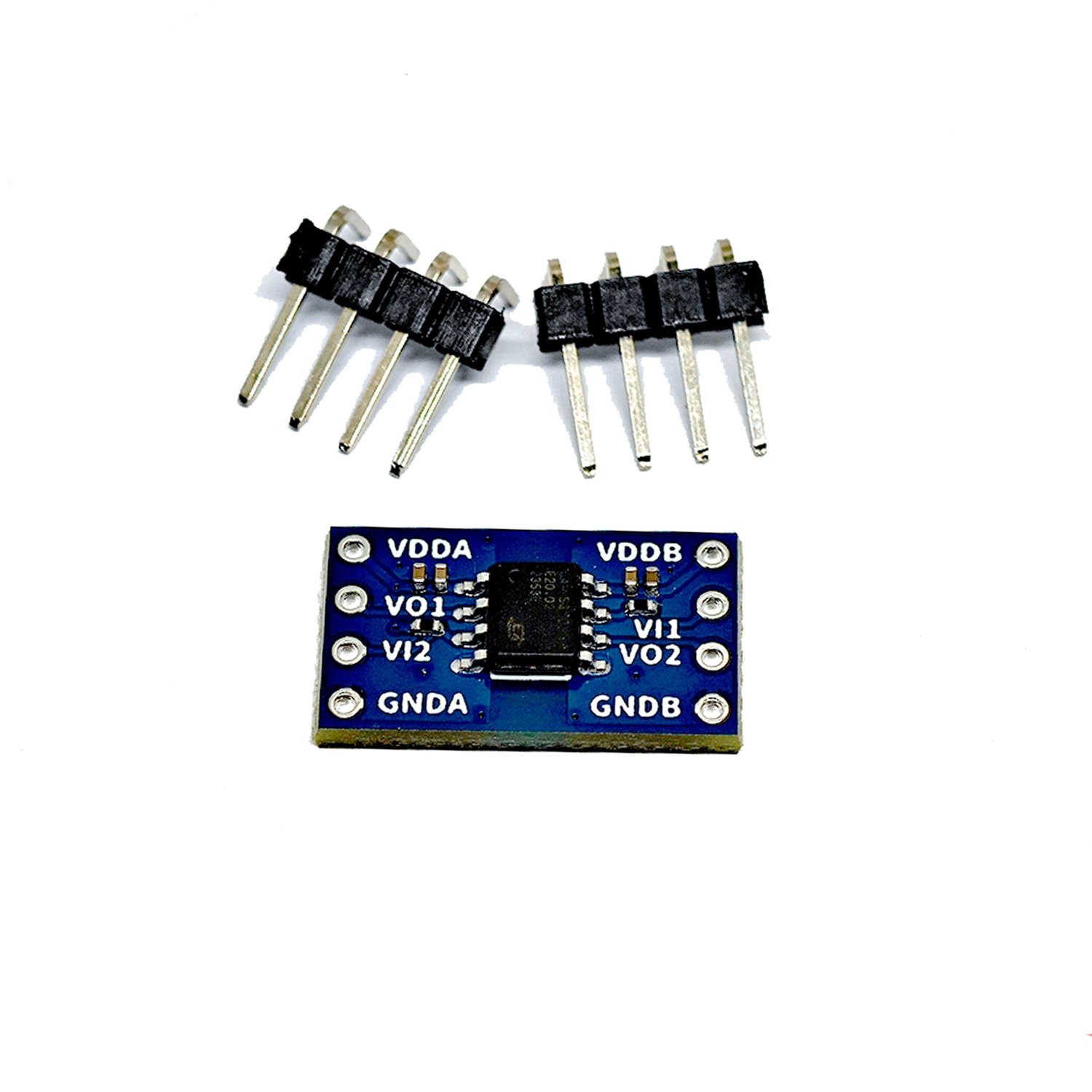CA-IS3722 High-Performance Dual-Channel Digital Isolator
The CA-IS3722 delivers ±150 kV/μs CMTI performance with 150 Mbps data rates for industrial communication systems. Engineered by Shanghai Chipanalog Microelectronics, this digital isolator provides superior noise immunity and reliability in harsh industrial environments.
Key Features
- Superior Noise Immunity – Industry-leading ±150 kV/μs CMTI outperforms TI and ADI competitors
- High-Speed Performance – DC to 150 Mbps data rate with ultra-low 12ns propagation delay
- Robust Isolation – Up to 5,000 VRMS isolation voltage for critical safety applications
- Extended Operating Range – 2.5V to 5.5V supply with -40°C to +125°C temperature range
- Bidirectional Architecture – 2 channels with 1 channel in each direction for flexible communication
- Multiple Package Options – SOIC8 narrow/wide body and SOIC16 wide body configurations
- Comprehensive Safety Certified – VDE 0884-17, UL 1577, IEC 61010-1 compliant
- Long Operational Life – >40 years with capacitive SiO2 isolation technology
- Low Power Consumption – 1.2mA per side at 3.3V DC operation
Technical Specifications
| Parameter | Specification | Units | Notes |
|---|---|---|---|
| Performance Specifications | |||
| Data Rate | DC to 150 | Mbps | Continuous operation from DC to maximum speed |
| Propagation Delay | 12 (typical) | ns | Best-in-class timing performance |
| Propagation Delay Skew | 2 (chip-to-chip) | ns | Excellent channel matching |
| Pulse Width Distortion | 1 | ns | Minimal signal distortion |
| Minimum Pulse Width | 5 | ns | High-frequency capability |
| Isolation Specifications | |||
| Isolation Voltage Rating | Up to 3,500 | VRMS | Robust isolation barrier |
| Common Mode Transient Immunity (CMTI) | ±150 (typical) | kV/μs | Superior noise immunity |
| Isolation Barrier Lifetime | >40 | years | Long-term reliability |
| Isolation Technology | Capacitive SiO₂ | – | Robust isolation barrier |
| Electrical Specifications | |||
| Supply Voltage Range | 2.5 to 5.5 | V | Wide supply range compatibility |
| Operating Temperature Range | -40 to +125 | °C | Extended temperature operation |
| Default Output State | High | – | Fail-safe operation |
| Power Consumption (VDD = 5.0V) | |||
| Power @ 1 Mbps | 1.5 per channel | mA | Low power consumption |
| Power @ 100 Mbps | 6.6 per channel | mA | Efficient high-speed operation |
| Operational Features | |||
| Startup Initialization | None required | – | Immediate operation |
| Channel Configuration | 2 channels bidirectional | – | Ideal for Tx/Rx isolation |
| Default Output Behavior | High when input unpowered/open | – | Safe system operation |
Primary Applications
RS-485 Transceiver Isolation – Protects PLCs and field devices in factory automation, process control, and building management systems. Eliminates ground loops and provides surge protection for long-distance industrial networks.
CAN Bus Transceiver Isolation – Ideal for electric vehicle battery management, charging infrastructure, motor control, and industrial CAN networks. Protects against electrical faults while maintaining signal integrity for critical automotive and industrial applications.
UART/Serial Communication – Maintains proper idle states during system initialization and prevents false start bits in isolated serial communication systems.
Bidirectional Architecture Benefits
The CA-IS3722’s 2-channel bidirectional design provides simultaneous Tx/Rx isolation in a single package. Channel 1 transmits from Side A to Side B, while Channel 2 receives from Side B to Side A, eliminating the need for two separate unidirectional isolators.
Fail-Safe Default High Output
When input is unpowered or open-circuit, the CA-IS3722 defaults to high output state. This ensures RS-485 transceivers remain disabled during power loss, CAN bus maintains recessive state during faults, and UART systems maintain proper idle states during initialization.
Safety Certifications
VDE 0884-17, UL 1577, and IEC 61010-1 certified for industrial and automotive applications requiring galvanic isolation up to 5000V.
